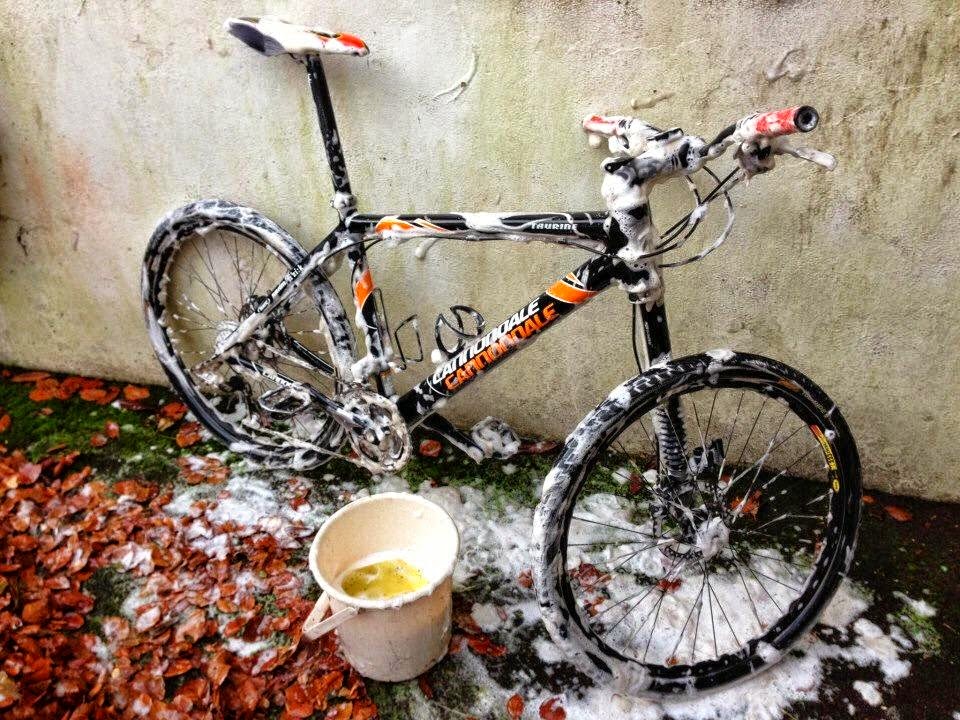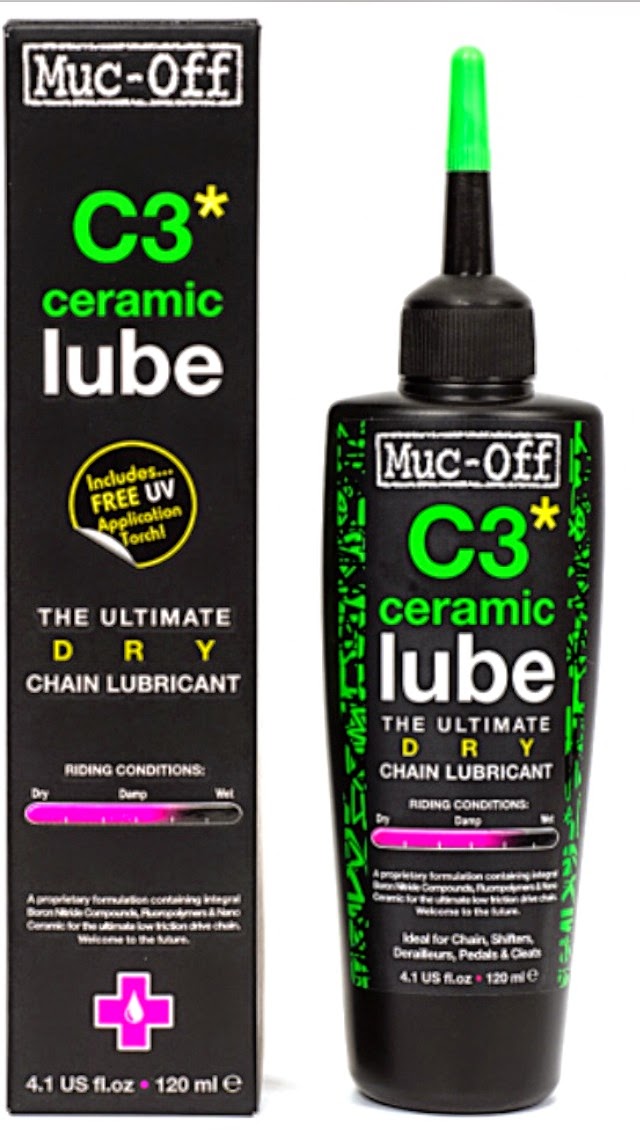Bike is a
collection of moving parts. When they come into contact with mud, dirt and
various debris, the wear and tear is inevitable. This accelerates the
deterioration of bike parts. Unsurprisingly, the first line of defense against all
these is proper cleaning. How often do you clean it? Purification cycling
depends on how (and how often) go for a ride and the weather conditions. So if
you spend much time driving in wet - muddy conditions, or if you drive hard,
fast and regularly clean your bike more
often. Very few bikers cleaning their
bikes after every ride. But a program for simple cleaning (once a month, once a
week or more often, depending on the type of cycling) is important and
necessary.Basic cleaning supplies:
Supplies product you may need depend on the state of the parts to be cleaned. Here is a brief list of key elements that cover most cleaning tasks.
Clean clothes: A good solution for both grease, oil and wax and for cleaning and drying are the clean clothes.
Soap: For washing frameworks. Use something mild, like diluted dish soap or a cleaner bike.
Water: Pay attention when you drop to the bike water under pressure can cause damage to sensitive systems.
Brushes: Use a couple of different sizes and shapes to remove dirt in places where simple rinsing alone can΄t clean. Old toothbrushes are good for corners and crevices and chain.
Solvents: You will need some type of general solvent for the parts of your bike as the chain and gears which are in dirt. Petrol, oil or some other special liquid are some of the materials you can use.

 Bike Wash: If your bike is not dirty enough, pass the frame
with a damp cloth, dampen otherwise without using water under pressure. With
the sponge after you make a rich lather pass all parts of the bike from top to
bottom leaving the sprockets and the chain. Use a small brush to spend points
that were difficult to reach with the sponge. With a small brush, wash the
parts of the derailleur to remove dust, dirt and oils. Take a brush solvents
and pass the chain touching the brush chain and rear cassette rotating forward
cranks (pedal). Then clean the cranks. For best cleaning results with chain you
can buy the special chain
cleaning device. Rinse
the bike without water pressure. Wipe to collect most quantity of water, and
leave it a little bit to dry.
Bike Wash: If your bike is not dirty enough, pass the frame
with a damp cloth, dampen otherwise without using water under pressure. With
the sponge after you make a rich lather pass all parts of the bike from top to
bottom leaving the sprockets and the chain. Use a small brush to spend points
that were difficult to reach with the sponge. With a small brush, wash the
parts of the derailleur to remove dust, dirt and oils. Take a brush solvents
and pass the chain touching the brush chain and rear cassette rotating forward
cranks (pedal). Then clean the cranks. For best cleaning results with chain you
can buy the special chain
cleaning device. Rinse
the bike without water pressure. Wipe to collect most quantity of water, and
leave it a little bit to dry.After allowing the bike to dry clean from the damp we use a cloth to clean the wheel rims at the point where there is a catching pad. Also the brake system if we have V-brakes or Disc brakes (hydraulic or mechanic) drives if you have to leave the remains of the pad. If the remains are not fleeing put some alcohol on a clean cloth and clean it again.
The last and most important part is oiling, that will stop the erosion so on the destruction of bike parts.
Oiling Bike: By keeping all the parts of your bike properly lubricated you will keep it in a good performance. The oil protects moving parts from excessive wear caused by friction, the "freezing", rust and corrosion from attacking the exposed metal parts. Be careful, though because excess lubrication can result in poor performance and damage components (excess lubricant attracts dirt and other abrasive particles). As a general rule, the excessive oiling should always be removed by carefully wiping across the surface of the bicycle.
Tip: When lubricate different parts simultaneously, just remember the order in which you apply lubricants. Wiping off the excess oiling in the same order will give lubricants time to soak in. When lubricate your bike, make sure you use lubricants that are suitable to the weather and driving conditions of your place. The rainy areas require more durable bicycle oils, while drier areas require lighter oils will not get as much dirt. Also, keep in mind that wet conditions usually require more often lubrication. Consult a local bike shop or bike mechanic for lubricants that match your driving conditions.
What is needed to lubricate the chain: The chain of your bike is 'at risk' when lubricated only a part of it. You should lubricate more often all so you can achieve slower pace of wear. Generally, lubricate the chain every time you produce a sound or appear "dry". The oiling after rainy rides will help keep your chain from rusting. Keep in mind that the type of chain lubricant (liquid or dry lubricant wax) affects how often should you oil it. Avoid excessive oiling. Before starting your ride, with a clean cloth wipe the chain, especially if you have lubricate it earlier in order to collect the excess oil which is useless for you and only dust can collect on it.
Ropes brake-speed: Lubricate
cables ropes to their inputs to the cables that wire to where we tucked into
the plastic and we move forward - back with the help of gear levers or brakes.
If you see rust spots immediately replace them.
Finally add small drops of oil on the axles of the pedals and where screwed the bolts of derailments.
Proper maintenance of the bicycle and its peripherals, prevents soil erosion or the appearance of other ordinary losses due to passage of time. Following the above ensure the longevity of our beloved bike and our own security.
Finally add small drops of oil on the axles of the pedals and where screwed the bolts of derailments.
Proper maintenance of the bicycle and its peripherals, prevents soil erosion or the appearance of other ordinary losses due to passage of time. Following the above ensure the longevity of our beloved bike and our own security.
Tires: After cleaning
the wheel rims, the spokes, the wheel release mechanism you can deal with tire
maintenance. After soaping - cleaning - drying tire get the special liquid
which is like olive oil, spread a small amount onto a clean cloth and then
brush it over the bike. The wheels will immediately get the black color as new.
This material simultaneously cleans and nourishes the wheels from little slots.
Pay attention in not riding your bike for 15΄ due to slippery wheels. After
this short period, the wheels will be like new.
 Saddle: Saddle is part of the bike that is responsible to a greater extent for
our driving pleasure. The friction generated by the seat, generates damage. But
there is a solution for them. Using the black tube (see photo) and with the
help of a round sponge put a small amount of starting in the saddle. The
material is in the form of gel with aloe and neutral PH thoroughly cleans the
saddle. After you leave for a while to dry put the material contained in the
white tube (see photo) with the help of the second round sponge with microfiber,
and apply it across the surface. Then let it dry and at the next ride your
saddle will look like new.
Saddle: Saddle is part of the bike that is responsible to a greater extent for
our driving pleasure. The friction generated by the seat, generates damage. But
there is a solution for them. Using the black tube (see photo) and with the
help of a round sponge put a small amount of starting in the saddle. The
material is in the form of gel with aloe and neutral PH thoroughly cleans the
saddle. After you leave for a while to dry put the material contained in the
white tube (see photo) with the help of the second round sponge with microfiber,
and apply it across the surface. Then let it dry and at the next ride your
saddle will look like new.
Silicone: In the end
after we have followed all the above steps you get the special silicone spray
and sprayed your whole bike frame except disc brakes. Leave it for about 5΄ and then with
a microfiber cloth wipe the frame while you polish it. This
will leave the frame gloss which will protect your bike during your first ride from
dust deposited on it, so if your ride does not include wet places or fluids or not
a rainy day, when you go back to your home simply wipe off the bike and is
ready for the next trip. By that simply way you can keep very clean the whole
frame.
The maintenance and protection of our favorite two-wheel friend is continuing in order to always achieve the maximum of our physical capabilities.








